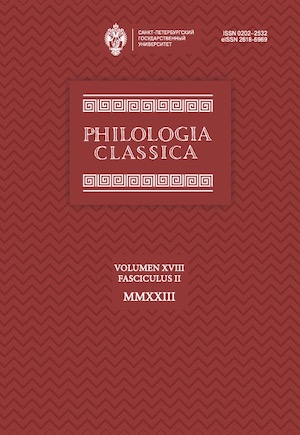The Correggio Code: In Search of the Nepenthes Lady
DOI:
https://doi.org/10.21638/spbu20.2023.211Abstract
The Portrait of a Lady attributed to Correggio (St Petersburg, State Hermitage, inv. no. 5555) was witnessed as signed with the Latin pseudonym Antonius Laetus. The inscription was still legible in the 70s, and the analysis of parallels confirms authenticity of the painting while also indicating the time of its creation — most likely in the winter 1518–1519. The identification of the sitter as Ginevra Rangoni accepted by the majority should not be disputed. The idea expressed by Riccardo Finzi more than half a century ago can moreover be supported by new arguments: not only the scapular and the Franciscan knot, but also the laurel, ivy, myrtle, the general expression of the widow bride, the full cup of charming wit as a cure for the bitterness of losses, and the reference to Helen of Troy — all this perfectly fits in with Ginevra’s life circumstances. Contrary to the authoritative opinion of Claudio Franzoni, the inscription on the cup cannot be reduced to a single word: besides νηπενθές it includes ἄχολο[ν], explaining the uncommon epithet, a hapax, and [ἐπίληθον ἁπά]ντων, marking the end of verse Od. 4. 221. Correggio reflected on the feast scene in Menelaus’ palace, visualized it in his creative imagination, and the viewer should turn to it to understand the artist’s intention. Its central character, Helen, appears to act very differently in the two stories told at its end. She sympathizes with the Achaeans, longs for the husband she left behind, and at the same time wants to destroy the warriors hidden in the belly of the wooden horse, among them this deserted husband of hers. Abnormal details of the second story aroused suspicion; it might well have been an interpolation originally belonging to Iliupersis or Little Iliad. However, to Correggio’s mind the text was, of course, authentic, and he perceived the contradictory behavior of Helen as truly homeric. Inspired by Homer, he thus created an ethically ambivalent female image, feasible in its duality.
Keywords:
Correggio, Portrait of a Lady, Homer, Renaissance painting, Greek pinacograms
Downloads
References
Krasnobaeva M. D. The Paper Museum of N. B. Jusupov, in: S. J. Karp (ed.) The Age of Enlightment — Le Siècle de Lumière II. Moscow, Nauka Publ., 2009b, 43–71 (in Russian).
Downloads
Published
How to Cite
Issue
Section
License
Articles of "Philologia Classica" are open access distributed under the terms of the License Agreement with Saint Petersburg State University, which permits to the authors unrestricted distribution and self-archiving free of charge.






